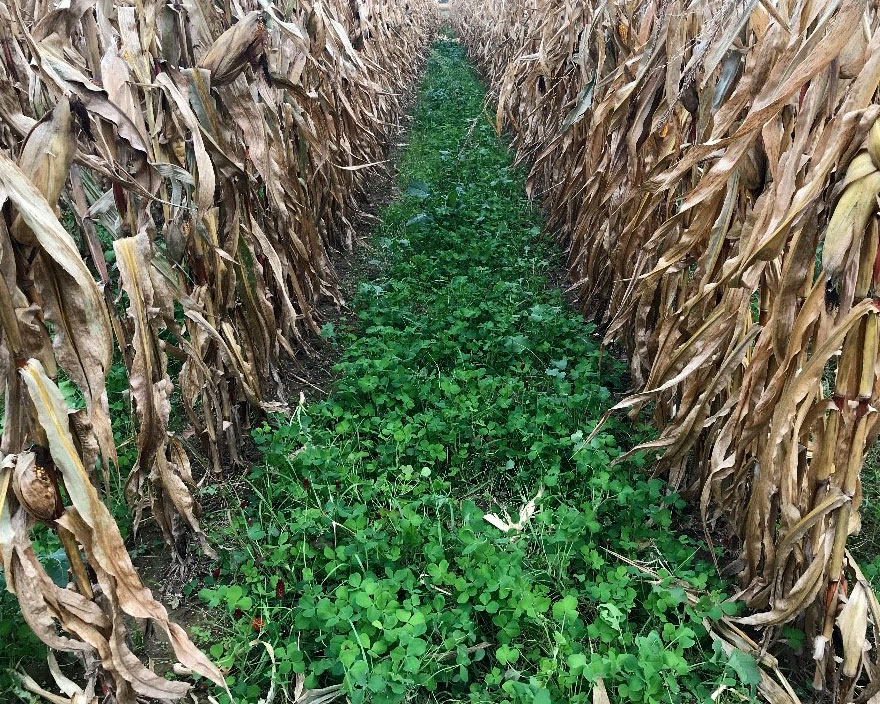Intercropping with cover crops is a sustainable farming practice that involves planting two or more crops together in the same field. This technique has numerous benefits, including improved soil health, increased biodiversity, and enhanced pest management.
Cover crop termination methods play a crucial role in the success of intercropping systems. Farmers have several options for terminating cover crops, such as mechanical methods like mowing or tilling, chemical methods using herbicides, or natural termination through winterkill. The choice of method depends on various factors including crop type, timing, and available resources.
One major advantage of incorporating cover crops into farming practices is their ability to control soil erosion. Cover crops help prevent erosion by protecting the soil surface from wind and water erosion during periods when cash crops are not actively growing. Their dense root systems also contribute to stabilizing the soil structure and reducing runoff.
Legume cover crops offer an additional benefit of nitrogen fixation. Legumes have symbiotic relationships with nitrogen-fixing bacteria that convert atmospheric nitrogen into forms usable by plants. By growing legume cover crops alongside cash crops, farmers can reduce or eliminate the need for synthetic nitrogen fertilizers while improving soil fertility.
Weed suppression is another significant advantage of using cover crops in agricultural systems. Certain cover crop species suppress weeds by competing for resources such as light, water, and nutrients. Additionally, some cover crop species release allelopathic compounds that inhibit weed growth.
Water conservation is becoming increasingly important in agriculture due to changing climate patterns and limited water resources. Cover cropping plays a vital role in water conservation by reducing evaporation from bare soils and improving infiltration rates. The plant residues left behind after cover crop termination act as mulch, further reducing moisture loss from the soil surface.
Cover cropping techniques are not limited to row-crop agriculture; they can also be beneficial in orchards and vineyards. Introducing specific cover crop species between rows helps maintain soil health while providing additional benefits such as erosion control, weed suppression, and improved water infiltration.
In cold climates, winter cover crops are an excellent option to protect the soil during the dormant season. Winter cover crops help prevent nutrient leaching and reduce soil erosion caused by winter rains or snowmelt. Common options for cold climates include rye grass, hairy vetch, and crimson clover.
Even in small garden spaces, cover cropping can be successfully implemented. Compact cover crop varieties like buckwheat or mustard greens can be grown between vegetable rows or in containers to improve soil health and provide other benefits such as nitrogen fixation or pest management.
Cover crops also play a crucial role in attracting beneficial insects and pollinators to agricultural landscapes. By selecting flowering cover crop species like phacelia or sunflowers, farmers can create habitats that attract bees, butterflies, and other pollinators essential for crop production.
Pest management is another aspect where cover cropping can make a significant impact. Some cover crop species release natural compounds that repel pests or attract predatory insects that feed on pests. This reduces the need for chemical pesticides while promoting ecological balance within farming systems.
For livestock farmers practicing rotational grazing systems, integrating cover crops into their grazing plans offers several advantages. Cover crops provide high-quality forage for livestock while improving soil health through their root systems’ deep penetration and nutrient cycling capabilities.
Choosing appropriate cover crop species based on specific soil types and conditions is essential for maximizing their benefits. Different species thrive under different environmental conditions; some are better adapted to sandy soils with low fertility levels, while others perform well in heavy clay soils with higher nutrient content.
Cover cropping has been shown to have a positive impact on soil microbial communities. The diverse root exudates released by various plants in a mixed-cover system promote microbial diversity and activity, leading to enhanced nutrient cycling and overall ecosystem functioning.
From an economic perspective, adopting cover cropping practices on small-scale farms may require initial investment but can lead to long-term cost savings. Reduced reliance on synthetic inputs, improved soil health, and increased crop yields all contribute to the economic viability of cover cropping systems.
Utilizing cover crops as green manure is another valuable practice in sustainable agriculture. Instead of leaving cover crops to decompose on the surface, they can be incorporated into the soil before planting cash crops. This adds organic matter, improves soil structure, and releases nutrients gradually over time.
When it comes to raised bed gardens, there are specific techniques for implementing cover cropping effectively. Cover crop species with shallow root systems like clover or oats can be sown between rows or after harvest to protect the soil from erosion and improve nutrient availability for future plantings.
Finally, no-till farming practices can greatly benefit from cover cropping. By keeping the soil covered with living plants year-round, farmers avoid disturbing its structure through tillage and promote a healthy microbial community that contributes to nutrient cycling and overall soil health.
In conclusion, cover cropping offers a wide range of benefits for sustainable farming practices. From improving soil health and controlling erosion to enhancing pest management and attracting beneficial insects, incorporating diverse cover crop species into agricultural systems has proven advantages across different climates and farm sizes. Understanding specific techniques based on individual needs allows farmers to harness these benefits effectively while promoting ecological balance within their farming operations.


Leave a comment